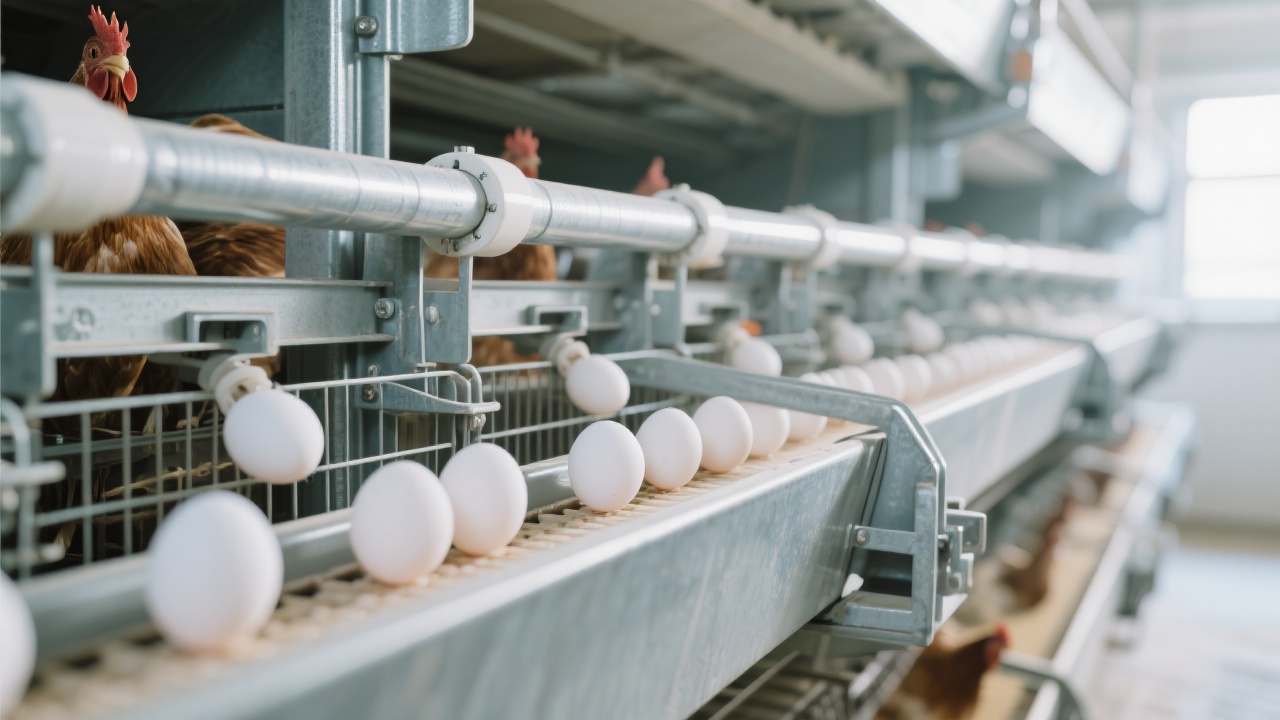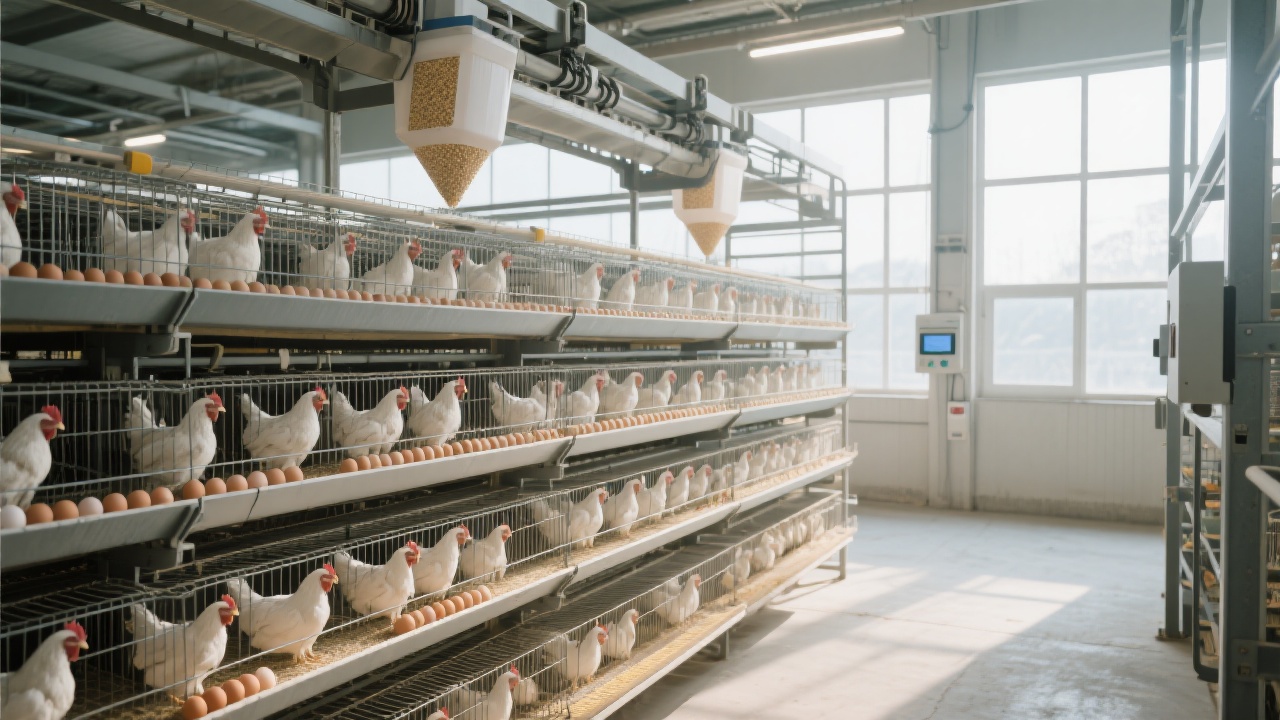
In the field of poultry farming, the design of laying hen cages plays a crucial role in determining the efficiency and profitability of a farm. The H-structure has emerged as a revolutionary design in laying hen cages, which is at the core of modern, efficient, and intensive egg production systems. This structure is designed to maximize the use of space while ensuring the well - being of the hens.
Traditional flat - rearing or single - layer cage systems have limitations in terms of space utilization. In contrast, the H - structured laying hen cages can significantly enhance the stocking density per unit area. For example, in a typical single - layer cage system, the space occupied by each hen is relatively large, and the overall number of hens that can be accommodated in a given area is limited. However, the H - design uses a double - layer vertical layout, which can increase the number of hens per square meter by 30% to 50%.

The following table shows a simple comparison of the stocking density between traditional single - layer cages and H - structured cages in a 100 - square - meter area:
| Cage Type | Number of Hens per 100 m² | Increase in Stocking Density |
|---|---|---|
| Traditional Single - layer Cages | 1000 | N/A |
| H - Structured Cages | 1300 - 1500 | 30% - 50% |
The layer spacing in H - structured laying hen cages is scientifically designed. Adequate layer spacing is essential for proper air circulation. Good air circulation helps to remove harmful gases such as ammonia and carbon dioxide from the cage environment, reducing the risk of respiratory diseases among the hens. For example, in a well - designed H - cage with appropriate layer spacing, the ammonia concentration can be reduced by up to 40% compared to a cage with improper spacing.
Light distribution is also affected by layer spacing. Uniform light distribution is important for the normal physiological development and egg - laying performance of hens. The scientific layer spacing in H - cages ensures that each hen receives sufficient light, which can increase the egg - laying rate by about 10% - 15%.
Moreover, proper layer spacing provides enough space for the hens to move, stretch their wings, and perform natural behaviors, which is beneficial for their physical and mental health. This is in line with the concept of animal welfare in modern poultry farming.

We have collected data from farms of different scales, ranging from 5000 to 30,000 hens. In small - scale farms with 5000 hens, the adoption of H - structured cages has reduced the required floor area by about 30%, which means more space can be saved for other purposes such as feed storage or equipment installation. In medium - scale farms with 15,000 hens, the labor cost has been reduced by approximately 20% due to the more efficient management enabled by the H - design. In large - scale farms with 30,000 hens, the overall cost per egg has been decreased by about 15% because of the increased stocking density and reduced operational costs.
The following table summarizes the data:
| Farm Scale | Floor Area Reduction | Labor Cost Reduction | Cost per Egg Reduction |
|---|---|---|---|
| 5000 Hens | 30% | N/A | N/A |
| 15,000 Hens | N/A | 20% | N/A |
| 30,000 Hens | N/A | N/A | 15% |
For farms with limited land resources, the H - structured laying hen cages are an ideal choice as they can make every square meter count. They are also suitable for farms aiming to improve efficiency and reduce costs. If you are facing problems such as high labor costs, poor air quality in the coop, or low egg - laying rates, the H - design may be the solution you need.
You may be wondering, 'Is the space utilization rate of my chicken coop up to standard?' If you want to find out more about how to optimize your chicken coop and make it more efficient, click here to explore our solutions.

Do you have similar problems in your poultry farm? Share your specific scenario with us, and we'll send you three solution cases from the same industry.

